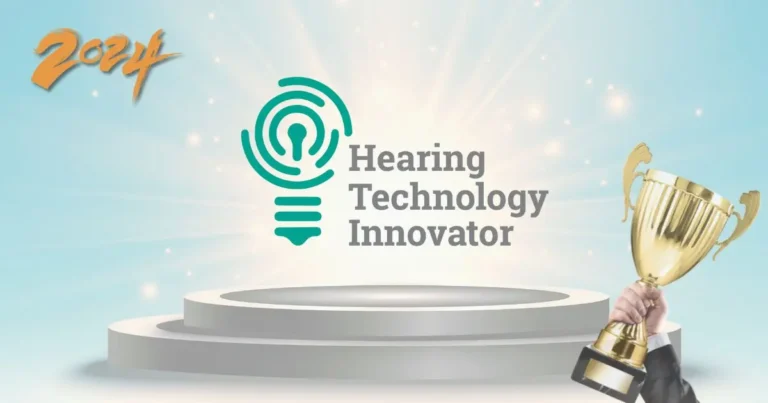
Hearing aid technology has undergone radical changes over the past few decades. From bulky analog devices to today’s highly intelligent digital products, hearing aids have not only helped people with hearing loss communicate better with the world, but have also incorporated many innovations from modern technology. In the future, the development of hearing aids will focus more on intelligence, personalization, invisibility and interconnectivity, making them an important part of the health technology field.

- Intelligent: AI makes hearing aids “smarter”
Artificial Intelligence (AI) is changing the hearing aid experience. Instead of simply amplifying sound, modern hearing aids can automatically adapt to their environment, recognizing different sound scenarios (e.g., a noisy restaurant, a quiet conference room, or an outdoor environment) and adjusting sound parameters to optimize the hearing experience.
For example, some high-end hearing aids are already equipped with speech recognition enhancements that can highlight the human voice while reducing background noise. Additionally, machine learning algorithms can learn a user’s hearing preferences and automatically optimize settings over time, reducing the need for manual adjustments.
In the future, AI may also enable hearing aids with health monitoring features, such as detecting falls, monitoring heart rate, and even predicting the risk of cognitive decline (e.g., Alzheimer’s disease) by analyzing sound patterns.

- Invisibility: smaller, more comfortable designs
Many hearing impaired people, especially young people, are still apprehensive about wearing hearing aids, fearing that they will not look good enough. As a result, hearing aid manufacturers are working to develop products that are more invisible and more comfortable.
- Totally Invisible Hearing Aids (IIC): these devices can be completely tucked into the ear canal and are virtually invisible.
- In-the-ear (RIC/CIC) hearing aids: they are smaller and more natural to wear than traditional behind-the-ear hearing aids.
- Open-fit hearing aids: A lighter design that reduces the feeling of blockage in the ear canal and is suitable for people with mild to moderate hearing loss.
In the future, hearing aids may be further miniaturized, and may even appear in the form of “smart earrings” or “bone conduction headphones,” making them both fashionable and functional.

- Interconnectivity: Seamless connection between hearing aids and smart devices
Modern hearing aids increasingly support Bluetooth connectivity, which allows them to be paired directly with smartphones, TVs, computers and other devices to realize wireless audio streaming. For example:
- When answering a phone call, the sound can be transmitted directly to the hearing aid.
- When watching videos or listening to music, the hearing aid can act as a wireless headset.
- Remotely adjust your hearing aid settings via a mobile app, or even have an audiologist do it remotely.
In the future, hearing aids may be further integrated into the Internet of Things (IoT) ecosystem, for example, linking with smart home devices to provide real-time alerts when the doorbell rings or the smoke alarm is triggered.

- Personalization: Customized hearing solutions
Everyone has a different hearing loss, so hearing aid tuning must be highly personalized. In the future, hearing aids may be combined with genetic testing, hearing data analysis and other technologies to provide users with more accurate hearing compensation solutions.
In addition, 3D printing technology is already being used to customize earmolds so that hearing aids fit the user’s ear canal better, improving comfort and sound quality.

- Affordability: technological advances lower the barrier to use
In the past, high-end hearing aids were expensive (often thousands of dollars a pair) and many insurance policies did not cover the cost. In recent years, however, the advent of OTC (over-the-counter) hearing aids has made basic hearing aids more affordable for people with mild to moderate hearing loss.
In 2022, the FDA approved the sale of OTC hearing aids, allowing consumers to purchase them without a doctor’s prescription. This policy has driven competition in the market, prompting more technology companies to enter the hearing aid market, further lowering prices and increasing accessibility.
Conclusion: The future of hearing aids is “smart health devices”
Hearing aids are no longer just hearing aids, but are evolving into multi-functional health wearables. With advances in AI, IoT, and miniaturization, the hearing aid of the future will be smarter, more invisible, more connected, and likely to incorporate more health-monitoring features, making it an important part of people’s daily lives.
For the hearing impaired, this means a better hearing experience, higher quality of life and stronger social participation. And for the technology industry, the hearing aid market is still full of opportunities for innovation and deserves continued attention.







